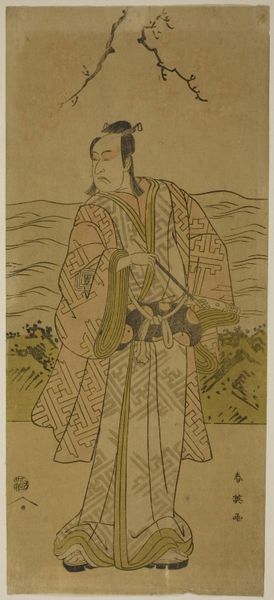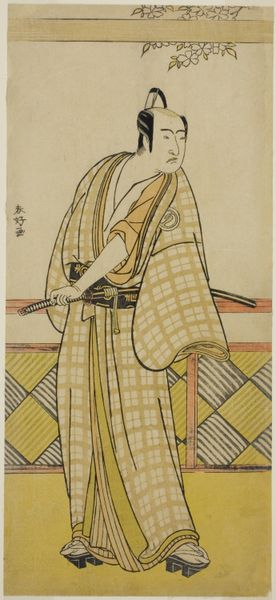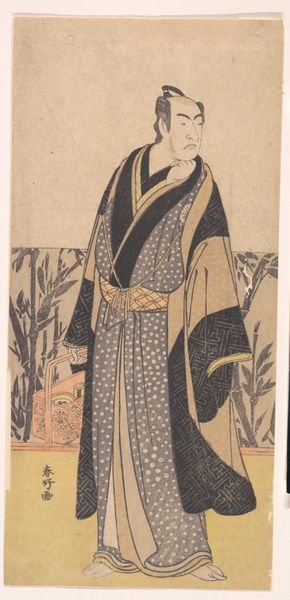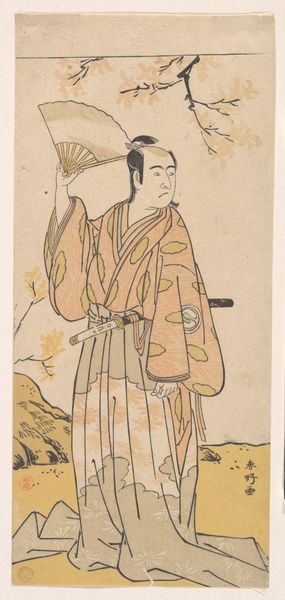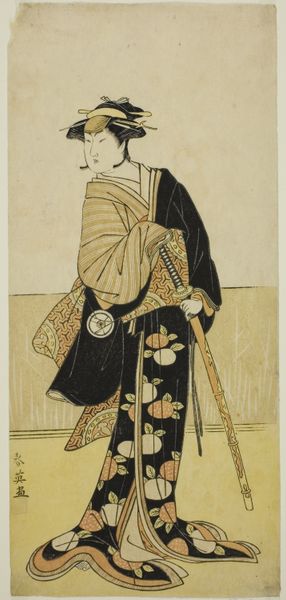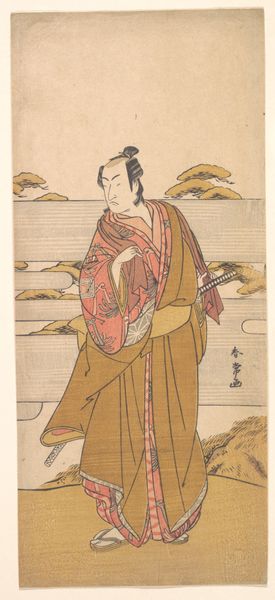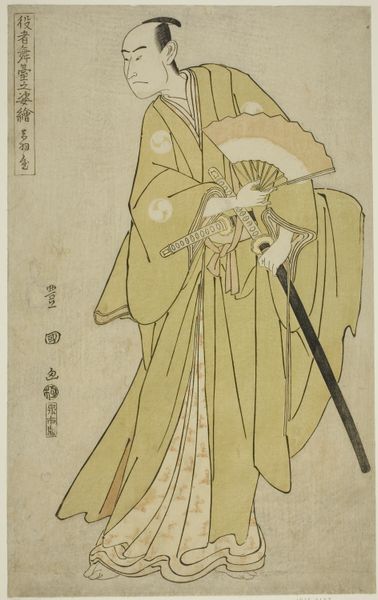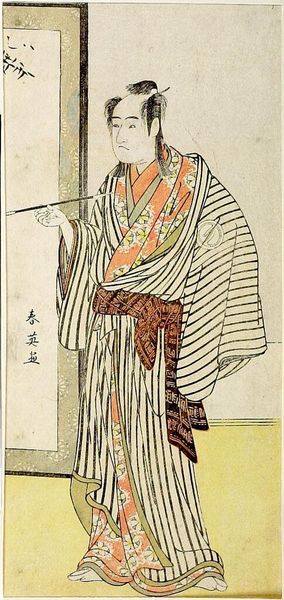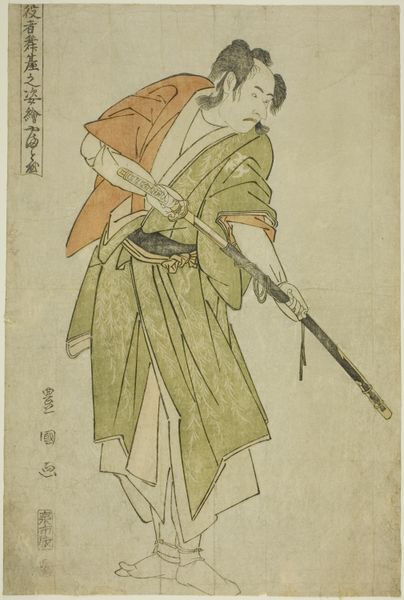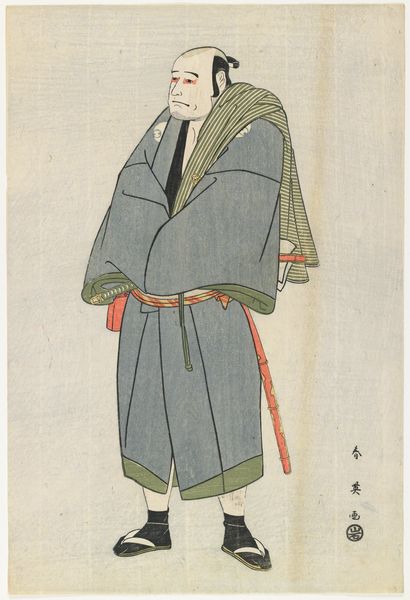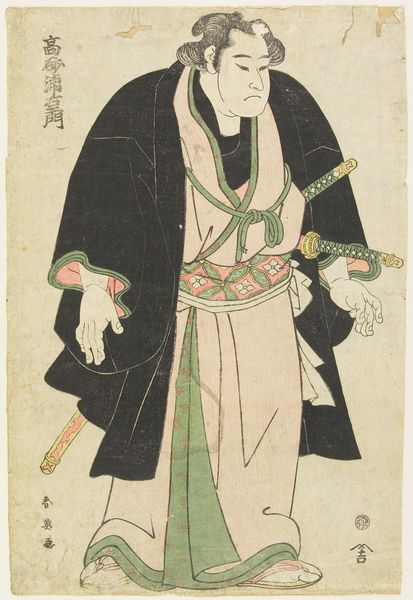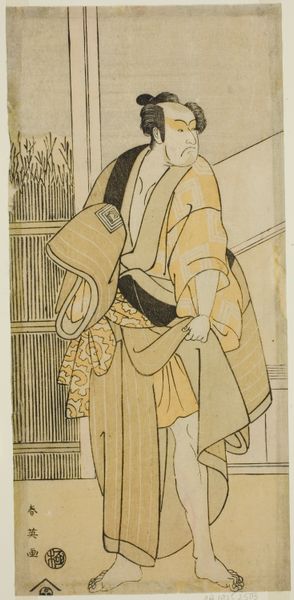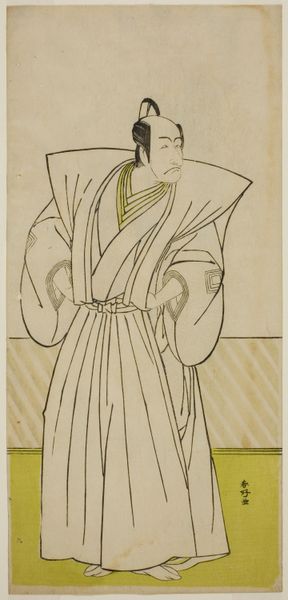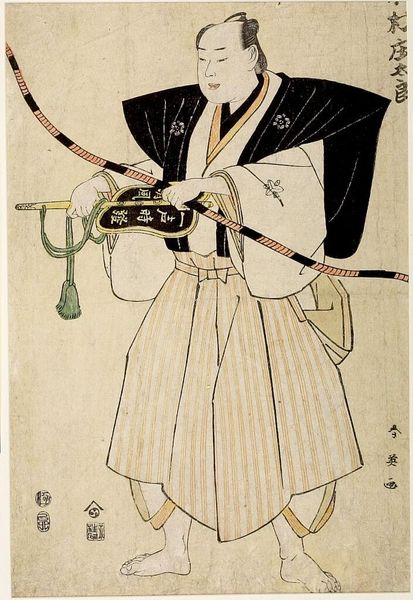
The Actor Ichikawa Danjuro V as Tambaya Suketaro in the Play On'ureshiku Zonji Soga, Performed at the Ichimura Theater in the Second Month, 1790 c. 1790
0:00
0:00
#
portrait
# print
#
caricature
#
asian-art
#
caricature
#
ukiyo-e
#
figuration
Dimensions: 31 × 13.9 cm (12 3/16 × 5 1/2 in.)
Copyright: Public Domain
Editor: Here we have a woodblock print by Katsukawa Shunkō from around 1790. It depicts the actor Ichikawa Danjuro V in the role of Tambaya Suketaro. I'm immediately drawn to the strong lines and how they define the figure against the flat background. How do you interpret this work through its formal elements? Curator: Considering the artwork’s structural components, attention must be paid to the interplay between figure and ground, between line and field. Notice how the composition relies on a careful balance of color, particularly the muted ochres against the patterned grey of the actor’s robe. The lantern provides a circular counterpoint to the verticality of the figure. How do these formal relationships strike you? Editor: I see what you mean about the verticality. The actor's posture and the lantern's placement really emphasize that. And the contrast between the simple background and the details in the actor's clothing is quite striking. It really does keep your eye moving. The square design on the sleeve is intriguing as well. Is there significance to this? Curator: That is the artist's signature, carefully rendered into a geometrical composition of contrasting shape. This serves as a reminder of the artist’s intervention in representing the world, a statement of pictorial agency. Considering its formal properties—the relationship of lines, the contrasting colors—how might one apprehend its essence without any cultural or contextual understanding? Editor: That's a really interesting point. You could appreciate the balance and harmony without knowing anything about Kabuki or Japanese art history. It is indeed a visually pleasing artwork with a dynamic sense of rhythm. Thanks! I hadn't considered it from this completely detached viewpoint before. Curator: Precisely. Sometimes, focusing on purely visual elements allows a more fundamental appreciation, free from the constraints of contextual knowledge.
Comments
No comments
Be the first to comment and join the conversation on the ultimate creative platform.
